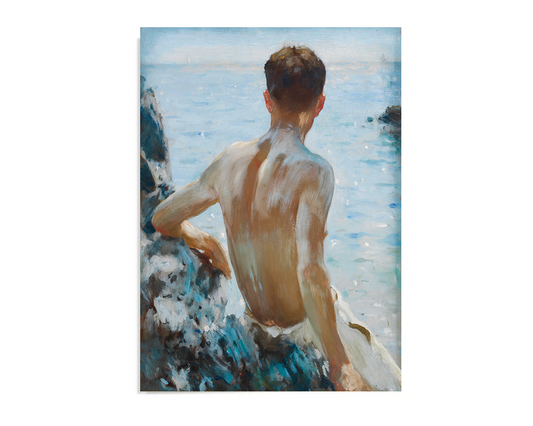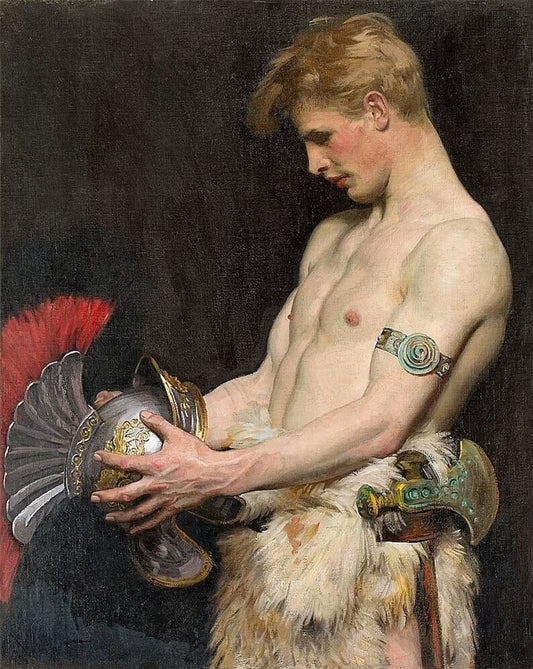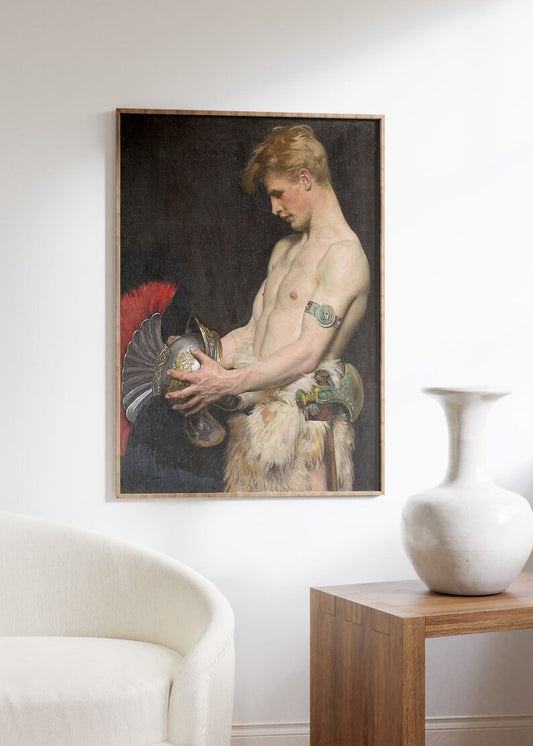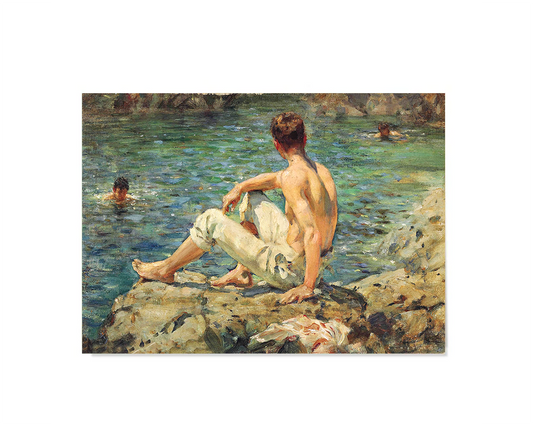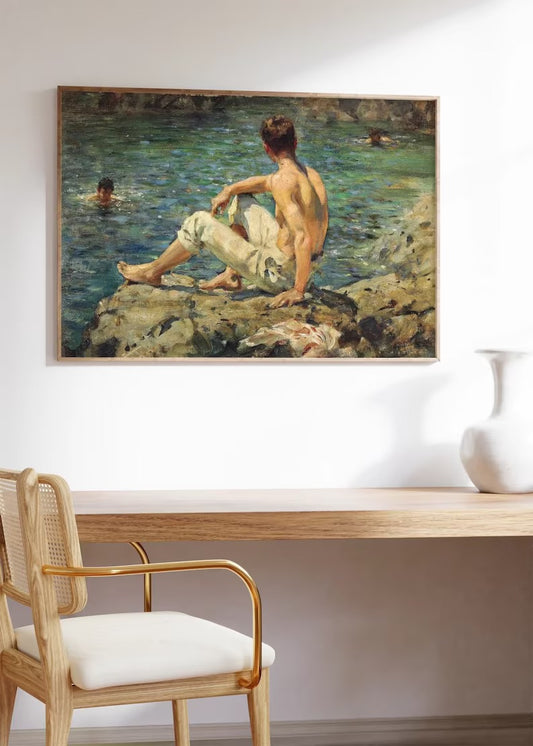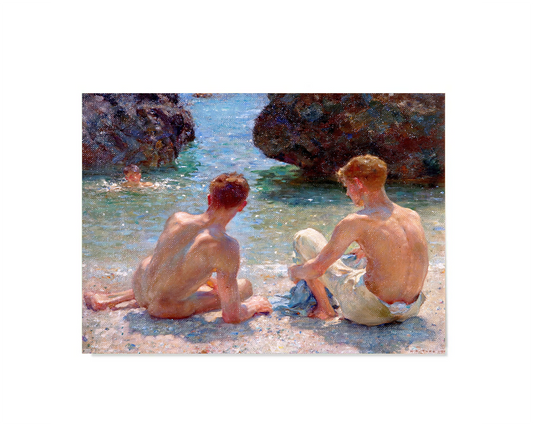Delight in the tranquil beauty of Henri Scott Tuke's seaside scenes, where sun-kissed figures lounge on sandy shores, lost in quiet contemplation or playful camaraderie.
Henri Scott Tuke, a master of the late 19th and early 20th-century British art scene, is celebrated for his evocative depictions of youthful innocence and the timeless allure of the sea. His works, often featuring nude male figures, reflect his fascination with the interplay of light and water.
Interestingly, Tuke's art was not only celebrated for its aesthetic qualities but also for its celebration of male beauty and freedom, capturing a sense of liberation and joy in the simplicity of seaside life.
Henri Scott Tuke was an English painter renowned for his depictions of male nudes and maritime scenes, particularly set in the idyllic landscapes of Cornwall, England. Born on June 12, 1858, in York, England, Tuke initially trained as an architect but later pursued a career in painting, studying at the Slade School of Fine Art in London.
Tuke's style is often associated with the Newlyn School, a group of artists based in the fishing village of Newlyn in Cornwall, known for their realist and naturalist approach to painting. Tuke, however, stood out within this group due to his focus on the male form, which was somewhat unconventional for the time. His paintings often depict young men, usually sailors or fishermen, in various states of undress, lounging by the sea or engaged in leisurely activities.
Henri Scott Tuke's art subtly expressed his homosexuality through his intimate depictions of male figures and his own life with his partner, William Samuel Cook. While not overtly discussed during his time, his paintings invite interpretations of same-sex desire and relationships within the tranquility of his coastal landscapes. Tuke's legacy includes not only his artistic talent but also his contribution to queer representation in art history.
Tuke's work is characterized by its sensitivity, tranquility, and a certain homoerotic undertone, though the homoerotic aspects were often subtle due to the societal constraints of his time. His paintings capture a sense of freedom, innocence, and beauty in the natural world, often featuring soft, diffused light and vibrant colors.
In addition to his paintings of male nudes, Tuke was also known for his maritime scenes, which captured the essence of Cornwall's coastal life. He had a particular fascination with the sea and often painted scenes of sailors and boats, reflecting his deep connection to the maritime culture of Cornwall.
Tuke spent much of his life living and working in Falmouth, Cornwall, where he found inspiration in the local landscape and community. He became a prominent figure in the artistic circles of Cornwall and was highly respected by his peers.
Throughout his career, Tuke's work evolved, but he remained dedicated to his subjects and his unique artistic vision. He continued to paint until his death on March 13, 1929, leaving behind a legacy of beautiful and evocative works that continue to be celebrated for their aesthetic and emotional appeal.
Tuke Print, Henri Scott Tuke Poster, Printed poster, Art, Wall Art, Room decor, Aesthetic Painting, Henri Scott Tuke Artwork, Art decor, home gallery wall, Fine Art Reproduction, Archival Giclee. HIGH QUALITY PRINT- Fine Art Print- Aesthetics Wall Art. Fine Art Reproduction Print, Classic Masterpiece.

